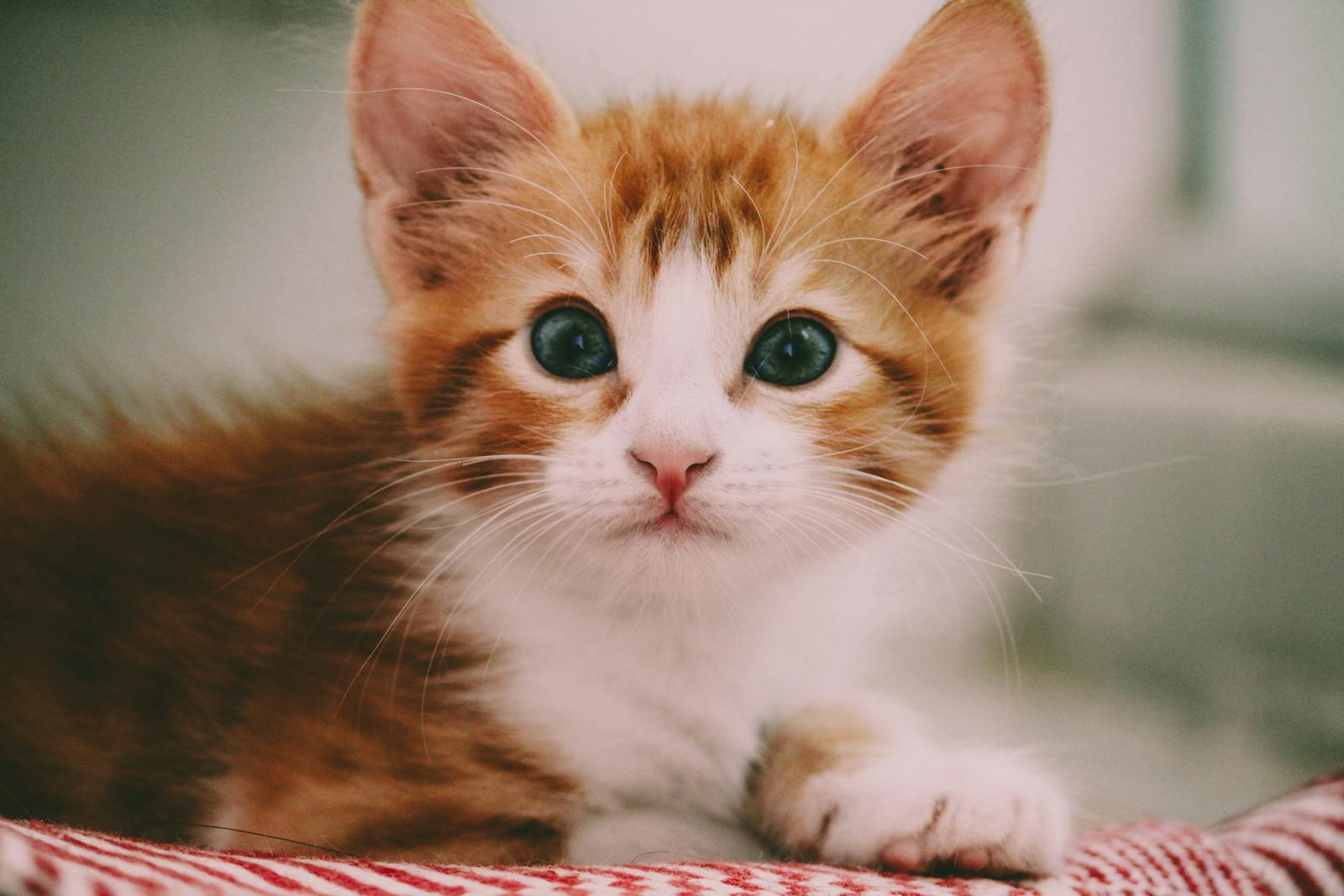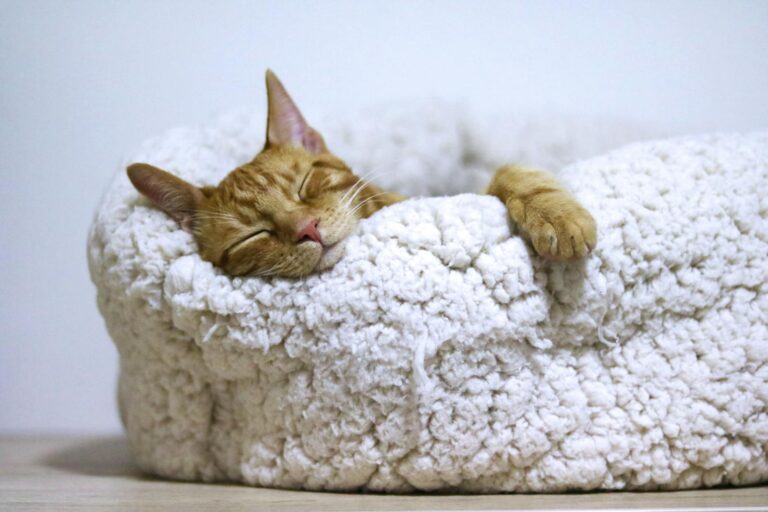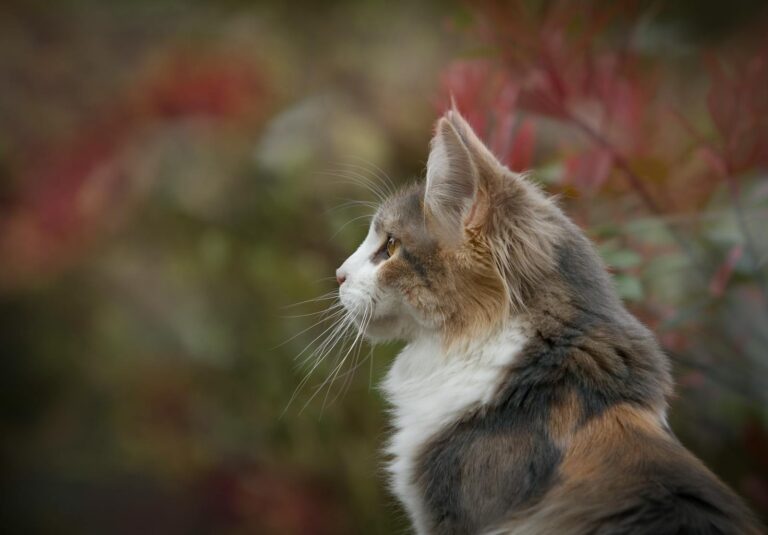Litter Box Training 101 – Essential Tips for Happy Cats and Owners
Litter Box Training 101: Tips That Actually Work is a crucial guide for cat owners who are navigating the sometimes challenging world of feline hygiene. Proper litter box training ensures that your cat understands where it is appropriate to relieve itself, which can lead to a more harmonious living environment for both you and your furry friend.
Understanding the Importance of Proper Litter Box Training
Litter box training might seem like a simple task, but its significance cannot be overlooked. Proper litter box training is essential not only for maintaining cleanliness in your home but also for ensuring your cat’s comfort and happiness. A well-trained cat is less likely to develop behavioral issues related to elimination, creating a better bond between you and your pet.
When we think about litter box training, it’s important to recognize that cats are instinctively inclined to bury their waste. This instinct is rooted in their nature as both predators and prey; hiding their scent helps protect them from potential dangers. Therefore, your objective during training should be to facilitate this natural behavior rather than force your cat into compliance.
The benefits of effective litter box training extend beyond just maintaining a clean home. It contributes significantly to your cat’s overall well-being. When a cat feels secure in its environment, including knowing where to go when nature calls, it can exhibit fewer signs of stress or anxiety. Moreover, successful training can save you time, effort, and money spent on cleaning up after accidents or addressing health issues caused by improper elimination habits.
The Role of Environment in Litter Box Training
Creating an appropriate environment for your cat plays a pivotal role in successful litter box training. Cats are sensitive creatures, and their preferences can vary greatly. Factors such as litter type, box size, location, and cleanliness all influence how your cat perceives its litter box.
Cats may feel anxious if their surroundings do not meet their needs. For instance, having a litter box in a noisy area might make a cat hesitant to use it. Therefore, understanding your cat’s behavior and preferences will significantly enhance your training efforts.
Cat Behavior Insights
Felines are fascinating animals with complex behaviors. Understanding the psychology behind their actions can empower you to approach litter box training more effectively. For example, if you notice your cat avoiding the litter box, consider factors such as:
- Health issues: This can indicate a possible medical problem. If your cat refuses to use the box, consult a veterinarian to rule out any health concerns.
- Preference for privacy: Many cats prefer to have their litter boxes in quiet, secluded areas. Providing this space can encourage them to feel safe while using the box.
By observing your cat’s reactions and adjusting your approach accordingly, you’re fostering a positive experience around litter box usage.
Choosing the Right Litter Box and Litter for Your Cat
Selecting the right litter box and type of litter is one of the most critical components of successful litter box training. With a variety of options available, making informed choices can lead to a more pleasant experience for both you and your cat.
Types of Litter Boxes
There are several types of litter boxes, each offering distinct advantages and disadvantages. Here’s a brief overview:
- Covered Litter Boxes: These provide privacy for your cat, which many felines appreciate. However, they can retain odors and may not be suitable for larger cats.
- Open Litter Boxes: These are easy to access, allowing your cat to enter and exit without hindrance. They facilitate airflow, reducing odor buildup, but some cats may feel exposed and vulnerable.
- Self-Cleaning Litter Boxes: These advanced models automatically sift waste, eliminating the need for daily scooping. While convenient, they can be costly and may require a learning curve for your cat.
Choosing the right type depends on your cat’s personality and preferences. For example, shy cats may appreciate the added security of covered boxes.
Selecting the Best Litter
When it comes to litter, there are various options available in the market, including clumping, non-clumping, crystal, and biodegradable litters. Each type has its own properties that can affect your cat’s experience. Here’s a look at a few popular choices:
- Clumping Clay Litter: This type forms solid clumps around moisture, making it easier to scoop waste. However, some cats may find it dusty, leading to respiratory irritations.
- Non-Clumping Litter: This absorbs moisture but does not form clumps, meaning it must be changed regularly. Some cats prefer this litter due to its softer texture.
- Crystal Litter: Made from silica crystals, this type absorbs moisture effectively and reduces odors. Its lack of dust is beneficial for cats with respiratory issues.
- Biodegradable Litter: Options made from materials such as corn, wheat, or recycled paper are eco-friendly and safe for cats. They often provide good absorption and odor control.
To select the best litter, consider your cat’s preferences and any allergies or sensitivities they may have.
Accessibility and Size Considerations
The size and accessibility of the litter box are crucial in ensuring your cat uses it comfortably. A general rule of thumb is to choose a litter box that is large enough for your cat to turn around easily and dig. Avoid excessively high sides, particularly for kittens or older cats, as these can create barriers to entry.
Additionally, placing multiple litter boxes in different locations can cater to a multi-cat household. A good guideline is to have one litter box per cat, plus one extra, ensuring everyone has a comfortable option available.
Table of Common Litter Types and Their Features
| Litter Type | Clumping | Odor Control | Dust Levels | Softness | Biodegradable |
|---|---|---|---|---|---|
| Clumping Clay | Yes | Good | Moderate | Low | No |
| Non-Clumping | No | Basic | Low | High | Yes |
| Crystal | No | Excellent | Very Low | Low | No |
| Biodegradable (Corn/Wheat) | Yes | Good | Low | High | Yes |
Understanding the unique features of each litter type can aid in selecting the best fit for your cat’s needs.
Setting Up the Ideal Litter Box Environment
Once you’ve selected the right litter box and litter, it’s time to set up an inviting litter box environment. This step is crucial in ensuring that your cat feels comfortable and secure while using their designated bathroom.
Optimal Location for the Litter Box
The placement of your litter box significantly impacts its usability. Cats typically prefer to have their boxes in quiet, low-traffic areas to avoid disturbances. Ideal locations include laundry rooms, bathrooms, or spare rooms. Avoid placing the box next to food and water dishes, as cats prefer some distance between their eating and elimination sites.
Consider the following tips for optimal litter box placement:
- Ensure that the box is easily accessible, especially for kittens or senior cats.
- Keep the box away from loud appliances or other pets that may intimidate your cat.
- Regularly check for hidden spots that may serve as viable locations for the litter box.
Hygiene and Maintenance Considerations
A clean litter box is vital for encouraging consistent use. Cats are naturally fastidious creatures and may refuse to use a dirty box. To maintain cleanliness:
- Scoop the litter box daily, removing clumps and waste.
- Change the litter entirely at least once a week, ensuring to scrub the box with soap and water to eliminate odors.
- Use odor-neutralizing products cautiously, as strong scents may deter your cat from using the box.
Regular maintenance is crucial for promoting a positive litter box experience, ensuring your cat associates the box with a clean and safe space.
Encouraging Positive Associations
To foster a positive relationship with the litter box, consider incorporating rewards into your training. Praise your cat or offer treats when they use the box appropriately. By associating the box with positive experiences, you’re reinforcing desired behavior.
Additionally, if your cat shows interest in the litter box, allow them to explore it freely. Create a gentle introduction through play or exploration so they feel more comfortable and confident when it comes time to use it.
Step-by-Step Guide to Litter Box Introduction and Training
Introducing your cat to their litter box should be a gradual process, designed to build trust and confidence. A well-executed introduction can set the stage for lifelong litter box habits.
Initial Introduction to the Litter Box
Begin by placing your cat near the litter box shortly after bringing them home. Allow them to explore at their own pace. You can place them gently inside the box to familiarize them with the environment.
If your cat begins to scratch or dig in the litter, praise and reward them to reinforce positive behavior. This helps them associate the litter box with a safe and appealing space.
Timing and Observation
Monitoring your cat’s behavior is key during this period. Observe their routines and pay attention to when they show signs of needing to eliminate, such as sniffing, scratching, or pacing. Gently guide them to the litter box when you notice these behaviors.
Consistency is essential—especially in the early days of litter box training. Make sure to take your cat to the box several times throughout the day, especially after meals or naps. Over time, they will begin to associate the box with relief.
Reinforcement and Reward System
Whenever your cat successfully uses the litter box, celebrate with praise or a treat. Positive reinforcement encourages your cat to repeat the behavior and strengthens their connection to the box.
Be mindful of their progress; if your cat makes a mistake elsewhere in the house, don’t punish them. Instead, try to identify what went wrong—was the box too dirty, in the wrong location, or was your cat stressed? Adjustments can help prevent further accidents.
Addressing Fear or Anxiety
Some cats may feel anxious about using the litter box, particularly if they were previously in a stressful environment or faced trauma. In such cases, patience is key. Gradually reintroduce them to the box, offering calming scents or pheromone sprays to reduce anxiety.
Create a sense of security by giving your cat plenty of time to acclimate. Encourage them to explore the box freely without pressure, gradually allowing them to feel more comfortable over time.
Troubleshooting Common Litter Box Problems and Solutions
Even with the best intentions, some cats may still struggle with litter box issues. Identifying and addressing these common problems early on can help restore peace to your home.
Refusal to Use the Litter Box
If your cat suddenly refuses to use the litter box, it may signal an underlying issue. Start by evaluating potential causes:
- Health Concerns: If your cat is experiencing pain while using the box, it could indicate urinary tract infections or other medical issues. Contact your veterinarian to rule out any health problems.
- Stress or Behavioral Changes: Environmental changes, such as new pets or moving homes, may trigger anxiety in your cat. Monitor their behavior closely and create a calm, predictable atmosphere.
- Unclean Box: Cats are highly sensitive to odors. Ensure that the litter box remains clean and odor-free to encourage continued use.
Inappropriate Elimination Outside of the Box
If your cat is urinating or defecating outside the litter box, it’s essential to address the root cause promptly:
- Identify specific locations where accidents occur and clean those areas thoroughly to remove lingering scents. This prevents your cat from returning to those spots.
- Provide additional litter boxes in different locations to accommodate your cat’s preferences, especially if you have a multi-cat household.
- Evaluate your choice of litter; some cats may prefer a different texture or scent. Experimenting with various options can help find the ideal fit.
Marking Territory Issues
Cats may sometimes mark territory out of stress or behavioral instincts. Spaying or neutering your cat can help mitigate this urge, but environmental stressors might still play a role. Consider the following solutions:
- Reduce territorial disputes by providing separate resources (like food, water, and litter boxes) for each cat in a multi-pet household.
- Reinforce a peaceful environment through play, mental stimulation, and interactive toys that cater to their natural hunting instincts.
Seeking Professional Help
If issues persist despite your efforts, consider consulting a feline behaviorist or veterinarian. Sometimes, professional guidance can provide insight into deeper psychological or behavioral issues affecting your cat’s litter box use.
Maintaining a Clean Litter Box: Hygiene and Cat Health
Maintaining a clean litter box is not just about aesthetics—it is critical for preserving your cat’s health and comfort. A well-kept litter box environment ensures that your cat feels confident in using it consistently.
Cleaning Protocols
Regular cleaning protocols are essential for keeping your cat’s litter box hygienic. Aim to scoop daily and perform a full clean weekly. Here’s how to maintain a pristine box:
- Daily Scooping: Remove clumps and waste daily to minimize odors. This practice keeps the box appealing to your cat.
- Weekly Deep Clean: Once a week, dispose of used litter completely, wash the box with mild soap and warm water, and dry thoroughly before refilling with fresh litter.
- Odor Management: Employ baking soda or specialized litter deodorizers to help manage odors. However, ensure that your cat isn’t sensitive to any added fragrances.
Monitoring Your Cat’s Health Through Litter Box Use
The litter box can be a valuable tool for monitoring your cat’s health. Changes in elimination patterns can indicate health issues or dietary concerns. Pay attention to:
- Frequency of Urination: Increased frequency may signal urinary tract problems, while decreased frequency could indicate dehydration or other health issues.
- Consistency of Stool: Healthy stool should be firm and moist. Loose or watery stools can indicate digestive upset or illness.
- Blood or Discomfort: Any sign of blood in the urine or excessive straining during elimination warrants immediate veterinary attention.
Recognizing Signs of Stress or Anxiety
A clean litter box isn’t always enough; cats can experience stress that may impact their willingness to use it. Recognize signs of discomfort, such as:
- Excessive grooming
- Hiding or withdrawal
- Changes in appetite or behavior
Providing a calming environment, using soothing pheromones, and engaging in regular playtime can help alleviate anxiety and promote a healthier relationship with the litter box.
Conclusion
In summary, mastering Litter Box Training 101: Tips That Actually Work involves understanding your cat’s instincts, selecting the right equipment, creating a welcoming environment, and maintaining regular cleaning habits. By approaching litter box training with patience and care, you can foster a healthy relationship with your feline companion while ensuring a clean and stress-free living space for both of you.







